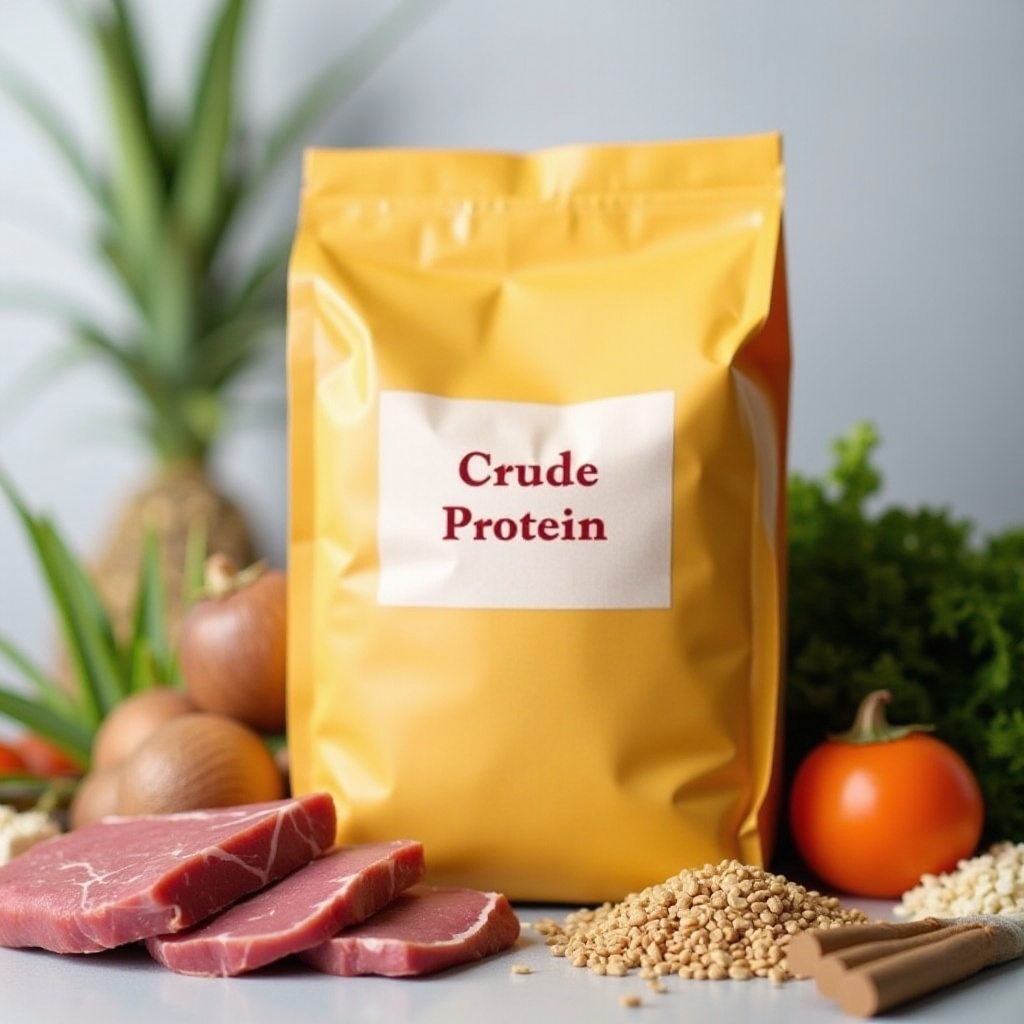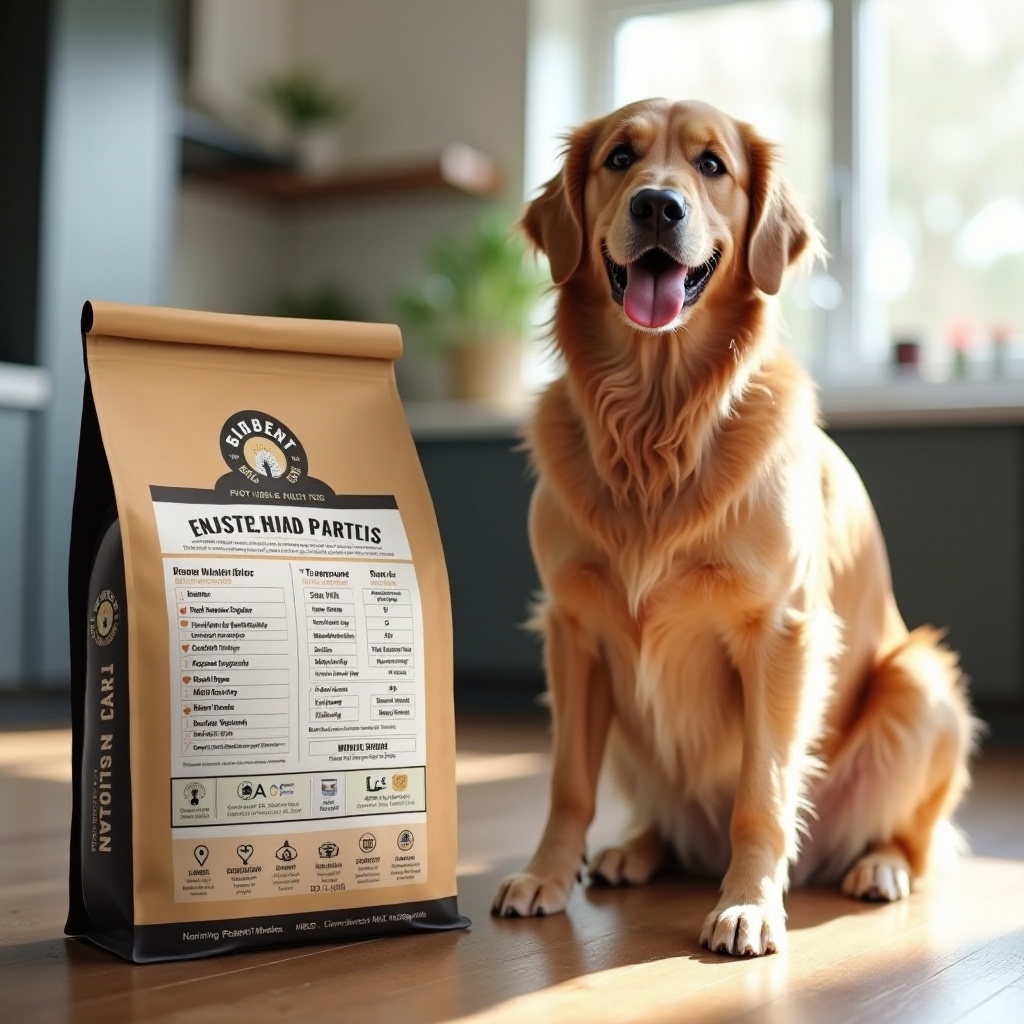Introduction
Understanding the components of dog food is crucial for your pet’s health. Protein is a key nutrient in maintaining a dog’s overall well-being. The term ‘crude protein’ often appears on dog food labels, but what does it actually mean? In this guide, we will explore the concept of crude protein, its importance, sources, how to read dog food labels, and how to determine the right protein content for your canine companion.

What is Crude Protein?
Crude protein refers to the total amount of protein in the dog food. It is determined by measuring the amount of nitrogen in the food and then multiplying it by a standard factor (6.25) since protein is the primary source of nitrogen in the diet. This measurement includes all protein-containing substances, both digestible and indigestible.
The term ‘crude’ does not imply the quality or digestibility of the protein but rather represents the total content. It’s an estimate that helps pet owners understand the overall protein level in the food, which is vital for a dog’s growth, muscle maintenance, and energy levels.

The Importance of Protein in a Dog’s Diet
Protein is indispensable for dogs. It plays a role in maintaining the immune system, repairing tissues, and supporting growth and development. Without sufficient protein, dogs can experience muscle wasting, immune deficiencies, and overall poor health. Ensuring your dog receives adequate protein is vital for maintaining their vitality and longevity.
There are several key reasons why protein is crucial:
1. Muscle Maintenance: Proteins are building blocks for muscles and tissues.
2. Energy Source: While fats and carbohydrates also provide energy, protein is essential for endurance and stamina.
3. Immune Function: Proteins form antibodies that help fight infections and diseases.
Recognizing the importance of protein underscores the value of understanding crude protein in dog food.
Sources of Crude Protein in Dog Food
Crude protein in dog food comes from various sources. Understanding these sources can help you make better choices regarding your pet’s diet.
- Animal-Based Proteins: These include chicken, beef, fish, and eggs. Animal proteins are considered high-quality sources due to their complete amino acid profiles, making them highly digestible and beneficial.
- Plant-Based Proteins: Ingredients such as soy, lentils, beans, and peas. While they can contribute to the overall protein content, they often lack one or more essential amino acids and may not be as digestible.
- By-products and Meals: These are parts of the animal left over after the meat has been removed. They include organ meats, bones, and connective tissues. While they can be nutritious, the quality can vary.
Animal-based proteins are generally preferred because they offer a complete set of amino acids. However, a balanced combination that includes plant proteins can also be beneficial.
How to Read Dog Food Labels for Protein Content
Reading dog food labels can be tricky, but it’s essential for ensuring your dog receives the nutrition they need. Here’s a quick guide to help you understand protein content:
- Guaranteed Analysis: Look for the ‘Crude Protein’ percentage under this section. It indicates the minimum amount of protein present in the food.
- Ingredients List: Ingredients are listed by weight before cooking. Check for the quality of protein sources mentioned. High-quality foods list specific meats as the first ingredient.
- AAFCO Statement: Check for a statement from the Association of American Feed Control Officials (AAFCO). It ensures the food meets standard nutritional requirements.
By scrutinizing these sections, you can discern the quality and quantity of protein in your dog’s food.
Determining the Right Protein Content for Your Dog
The ideal protein content in dog food varies based on several factors including age, activity level, and health status. Here’s how to determine what’s right for your dog:
- Puppies and Active Dogs: They require higher protein levels to support growth and energy needs. Look for foods with a minimum of 22-26% crude protein.
- Adult Maintenance: Healthy adult dogs typically need around 18-22% crude protein to maintain muscle mass and daily functions.
- Senior Dogs: Older dogs may require slightly less protein to avoid kidney strain, though some may need higher levels due to muscle wasting issues.
Consult your veterinarian to tailor your dog’s diet to their specific needs, ensuring they get optimal protein for their lifestyle and health.

Conclusion
Crude protein is a vital component in evaluating the nutritional quality of your dog’s food. Understanding what crude protein is, its sources, how to read labels, and determining the right amount for your dog can significantly impact their health and well-being. Ensure your dog’s diet is rich in high-quality, digestible protein to promote a long, healthy life.
Frequently Asked Questions
What is the difference between crude protein and digestible protein?
Crude protein measures the total nitrogen content in the food, representing all protein-sources, digestible or not. Digestible protein refers to the portion of protein that can actually be absorbed and utilized by your dog’s body. Digestibility varies among protein sources.
How can I determine the best protein source for my dog?
Evaluate the ingredients list for high-quality, animal-based proteins like chicken, beef, or fish, listed at the top. Ensure the food meets AAFCO standards and consult with a veterinarian for recommendations based on your dog’s specific needs and health conditions.
Can dogs have too much protein in their diet?
Yes, excessive protein can lead to health issues such as kidney strain, especially in dogs with preexisting kidney conditions. It’s important to match protein intake with your dog’s age, activity level, and health status. Always consult your veterinarian to determine the appropriate protein level for your dog.
